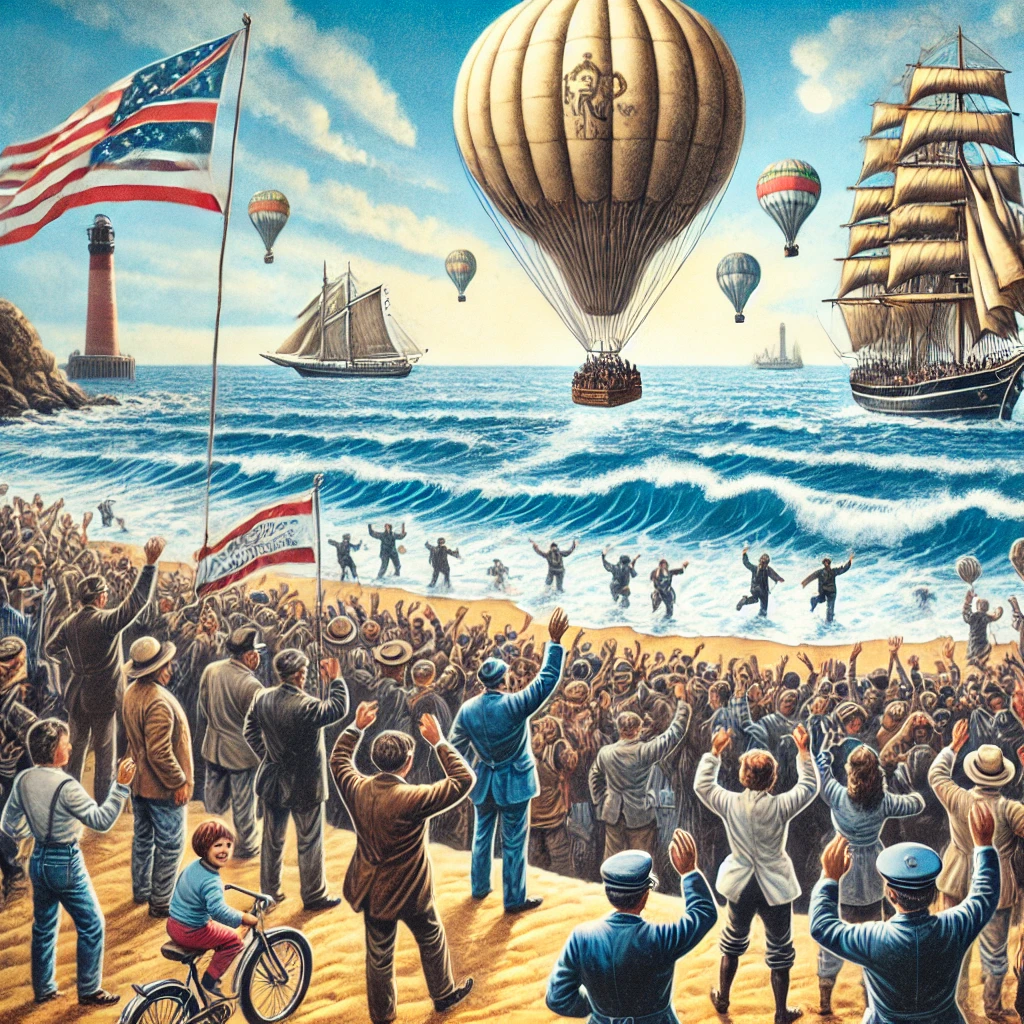On August 17, 1978, a landmark achievement in aviation history occurred when a hot air balloon, the Double Eagle II, successfully crossed the Atlantic Ocean. Piloted by a team of three Americans—Ben Abruzzo, Maxie Anderson, and Larry Newman—the flight was a remarkable feat of endurance and skill. The balloon took off from Presque Isle, Maine, and completed its transatlantic journey, landing in a field near Paris, France, after 137 hours in the air.
The Double Eagle II’s journey was a groundbreaking achievement in the field of ballooning. The successful crossing demonstrated the potential for balloon travel over long distances and marked a significant milestone in the exploration of the skies. The flight was meticulously planned and executed, with the team navigating through various weather conditions and utilizing sophisticated equipment to ensure a successful trip across the Atlantic.

The Journey and Challenges
The journey of the Double Eagle II was fraught with challenges. The balloonists faced unpredictable weather, strong winds, and navigational difficulties during their flight. To overcome these obstacles, they employed advanced meteorological forecasting and relied on their extensive training and experience. The balloon was equipped with cutting-edge technology for its time, including radio communications and altitude control systems, which were crucial for the successful completion of the transatlantic crossing.
The team also had to manage the balloon’s fuel and supplies carefully, as running out of either could have jeopardized their mission. The successful completion of the flight required not only technical expertise but also physical and mental endurance. The balloonists’ ability to adapt to changing conditions and their commitment to the mission were key factors in their historic achievement.

The Legacy of the Flight
The successful crossing of the Atlantic by the Double Eagle II had a lasting impact on the field of ballooning and aviation. The flight demonstrated the feasibility of long-distance balloon travel and inspired future balloonists and adventurers to pursue similar ambitious goals. The achievement was celebrated worldwide and highlighted the potential for human ingenuity and perseverance in the pursuit of exploration.
The legacy of the Double Eagle II flight continues to be remembered and celebrated in aviation history. The event is commemorated through various historical records, exhibitions, and events that honor the pioneering spirit of the balloonists. The flight remains a testament to the daring and innovative nature of those who push the boundaries of what is possible, inspiring future generations to explore new frontiers.

On August 17, 1978, the successful transatlantic crossing of the Double Eagle II balloon marked a historic milestone in aviation. The achievement underscored the possibilities of balloon travel and showcased the dedication and skill of its crew. The flight remains a significant event in the history of exploration, celebrating human achievement and the spirit of adventure.
